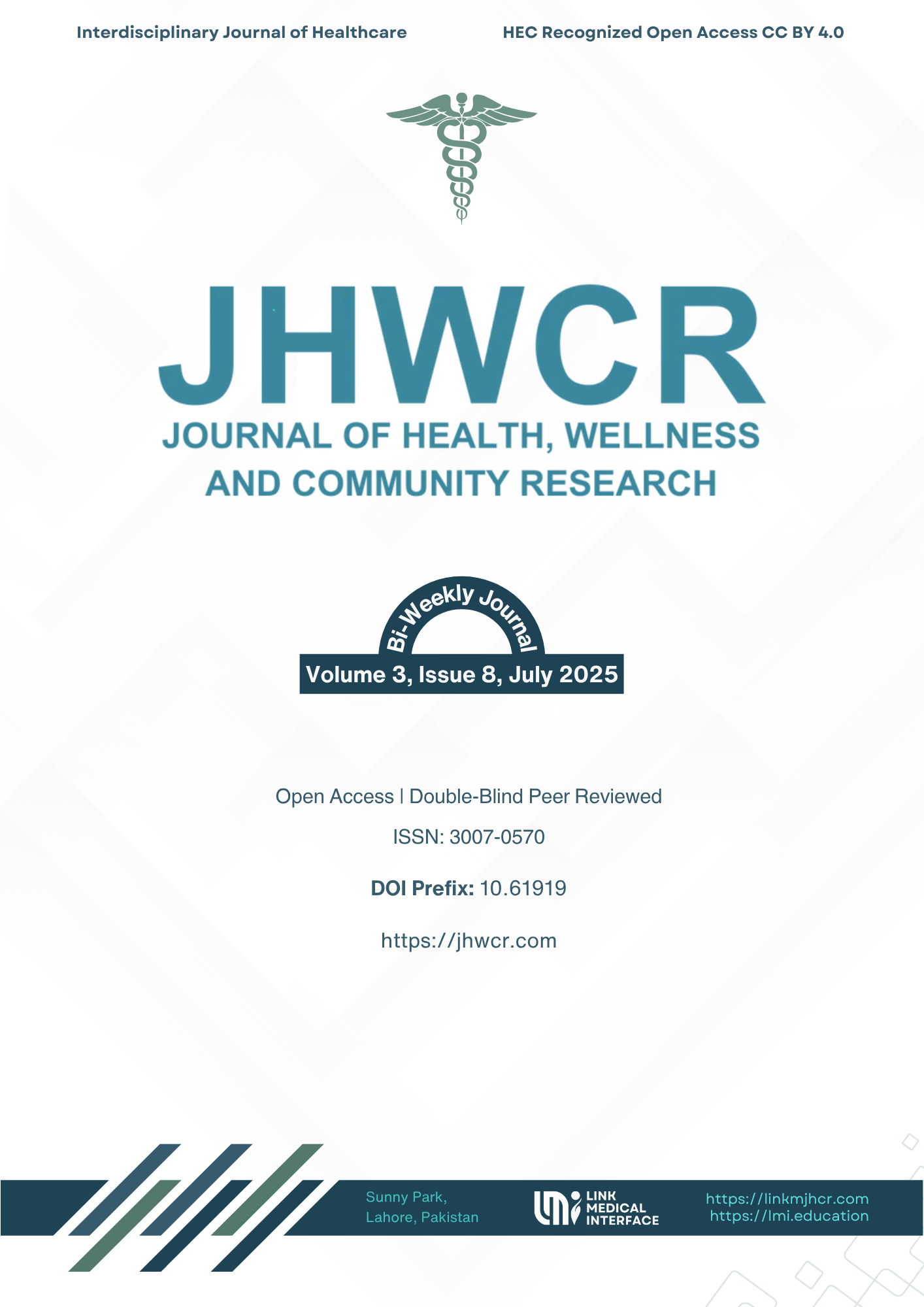Comparison of Open vs. Closed Kinetic Chain Exercises in Knee Osteoarthritis Rehabilitation
DOI:
https://doi.org/10.61919/ztrp0f25Keywords:
Knee Osteoarthritis, Open Kinetic Chain, Closed Kinetic Chain, Exercise Therapy, WOMAC, SF-36, RehabilitationAbstract
Background: Knee osteoarthritis (KOA) is a prevalent degenerative joint disorder that significantly impairs pain levels, physical function, and quality of life, particularly among aging populations. Exercise therapy is central to conservative KOA management, yet debate persists regarding the comparative efficacy of open kinetic chain (OKC) versus closed kinetic chain (CKC) exercises in optimizing patient outcomes. Objective: This study aimed to compare the short-term effects of OKC and CKC exercise programs on pain, physical function, and quality of life in individuals with mild to moderate KOA. Methods: A randomized controlled trial enrolled 40 participants aged 40–60 years with Kellgren-Lawrence grade I–II KOA, randomly assigned to either an OKC group (n=20) performing non-weight-bearing quadriceps exercises or a CKC group (n=20) engaging in weight-bearing functional exercises, thrice weekly for 12 weeks. Primary outcomes included pain and function assessed by the Western Ontario and McMaster Universities Osteoarthritis Index (WOMAC), and secondary outcomes were measured using the Short Form-36 (SF-36) health survey. Data were analyzed via repeated measures ANOVA with significance set at p<0.05. Results: Both groups improved significantly over time; however, the CKC group exhibited greater reductions in WOMAC pain (mean difference -1.5, p=0.01) and function scores (mean difference -3.5, p=0.001), alongside superior gains in SF-36 physical health (mean difference +5.4, p=0.01). Mental health scores improved similarly without significant between-group differences. Conclusion: While both exercise modalities benefit KOA rehabilitation, CKC exercises demonstrate superior efficacy in reducing pain and enhancing physical function and quality of life, advocating their preferential inclusion in clinical practice.
Downloads
Published
Issue
Section
License
Copyright (c) 2025 Aadil Ameer Ali, Sana Naqi, Rabbia Naseer, Shoaib Waqas, Amjad Hussain, Wafa Zainab (Author)

This work is licensed under a Creative Commons Attribution 4.0 International License.


